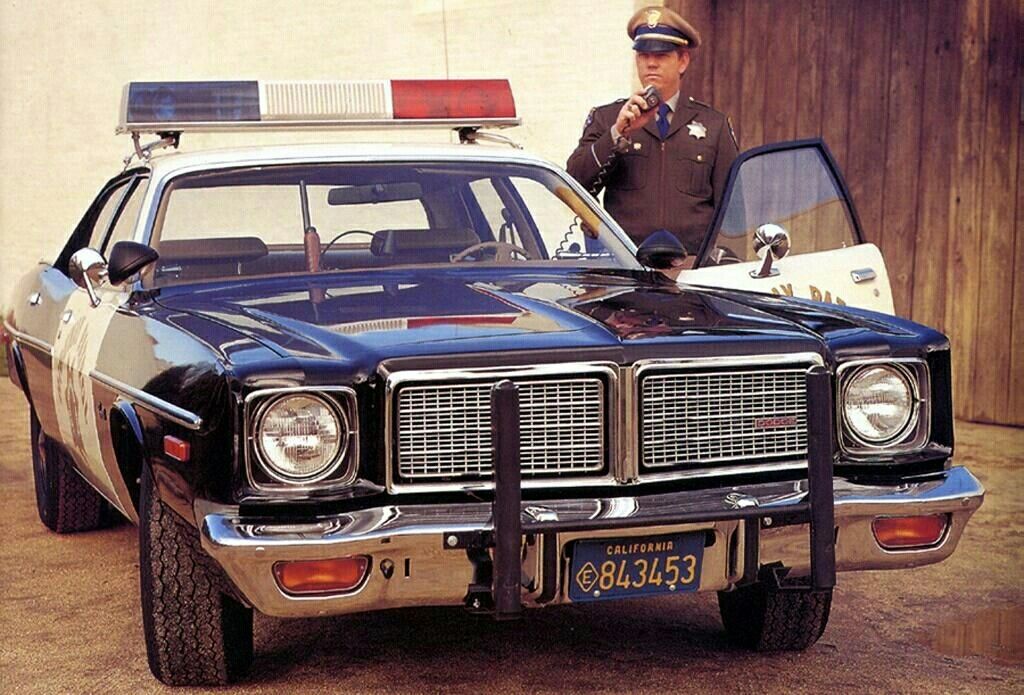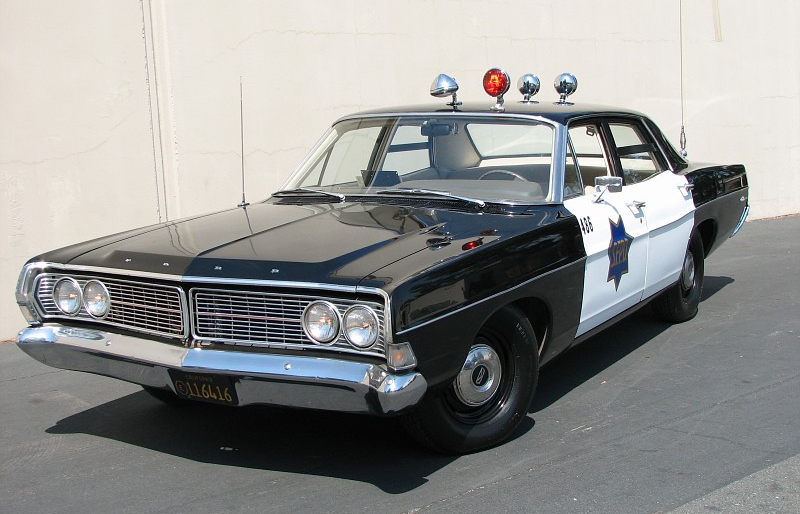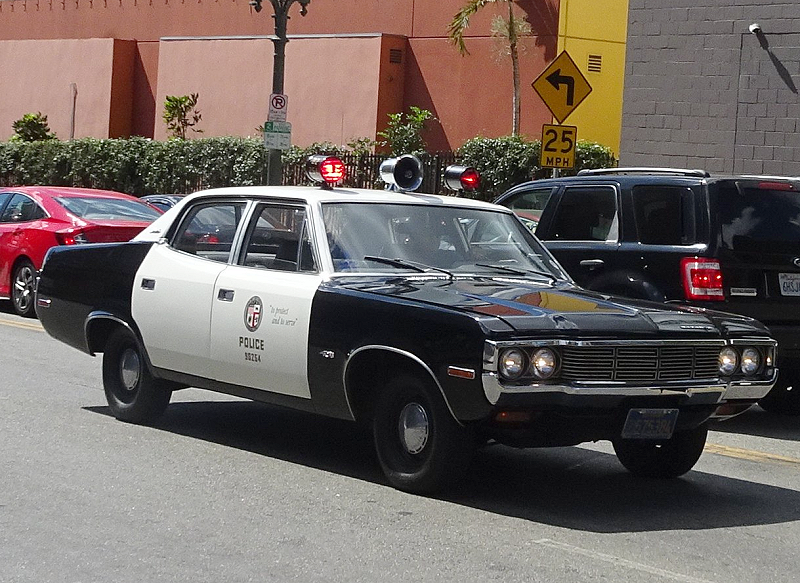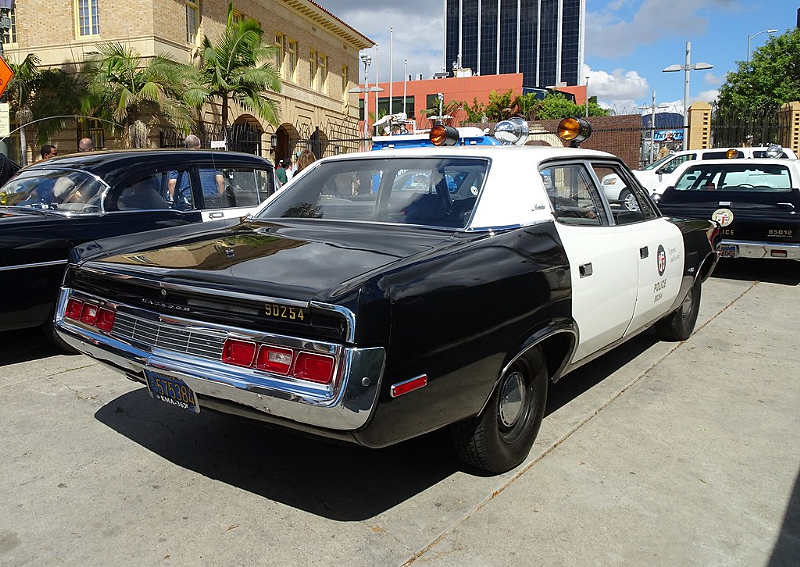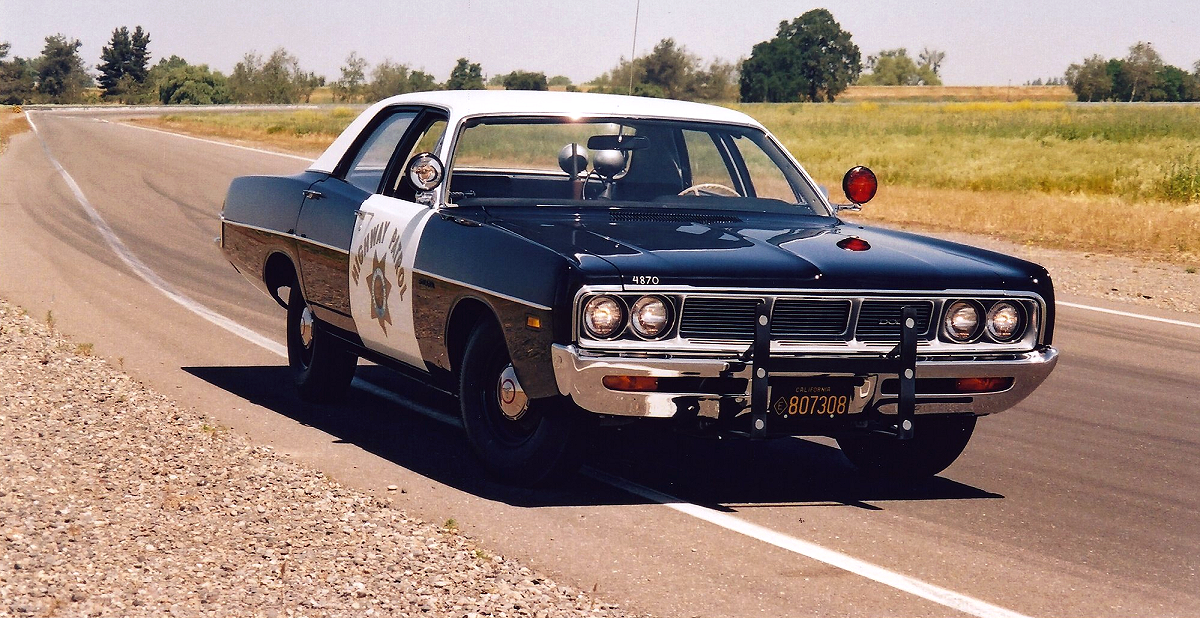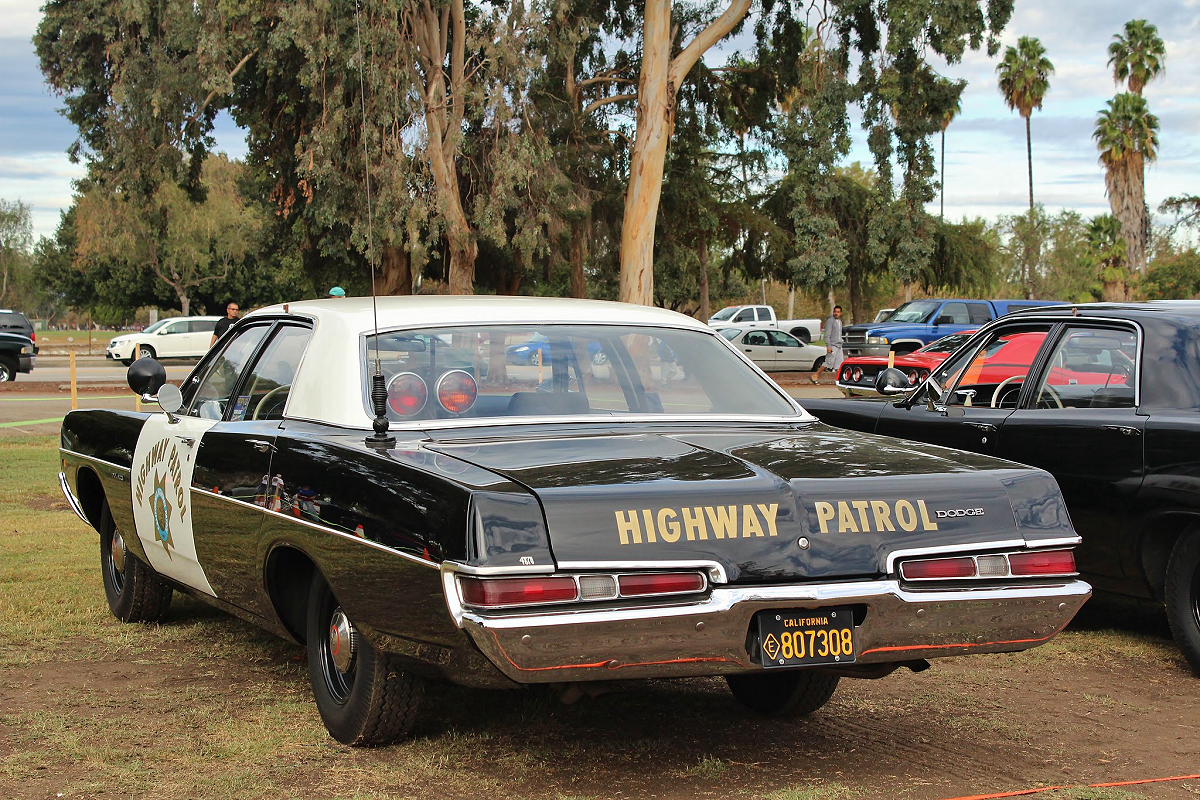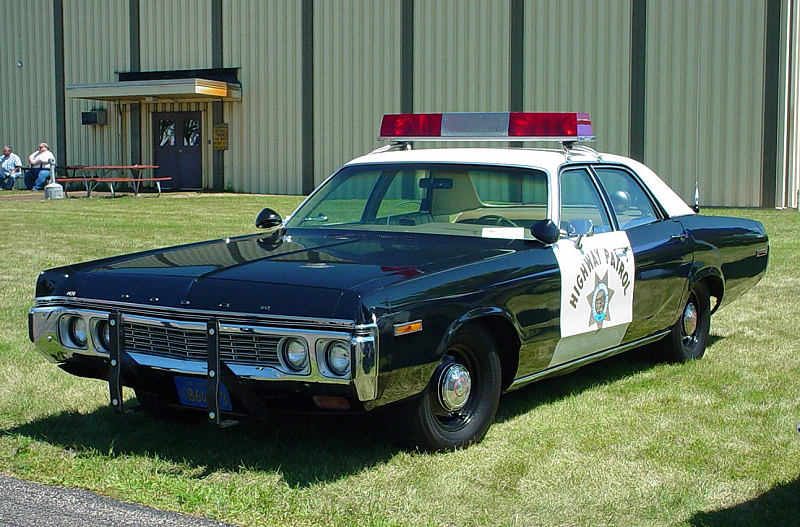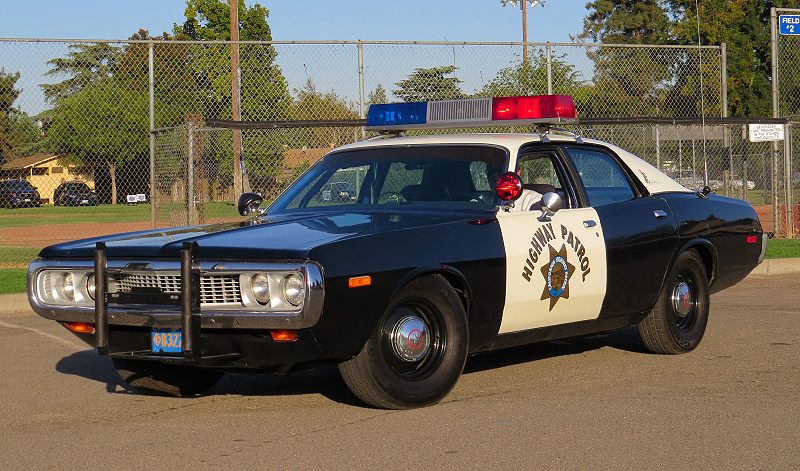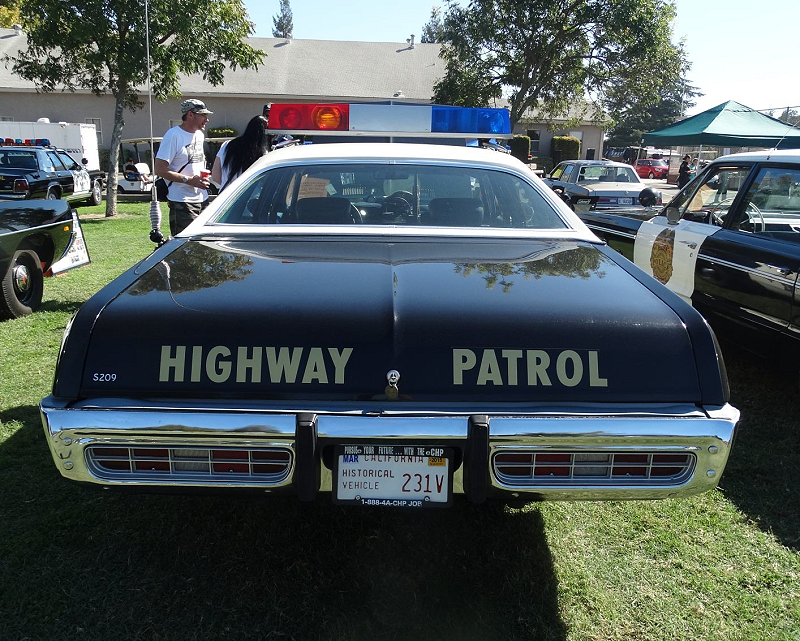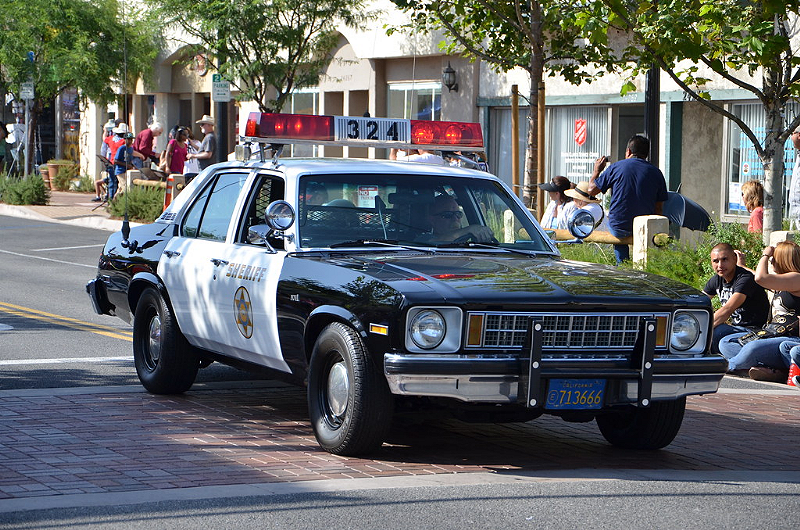NOTE: I found this story on the internet and found it so interesting that I wanted to preserve it. The story didn’t have any photos, so I added them.
Story By SoloRTP
I was there, at the beginning of the Third Age of Emergency Vehicle lighting.
Way back in the early days, red lights became a standard for telling people to pull over and get out of the way. Often nothing more than a red lens on a spotlight, lights started being mounted on the roofs of police cars, ambulances, fire trucks, etc. Spotlights were common, then, and members of the generation before mine used to tell us how they would put a gel sheet from the high school stage lights over the light on their cars and cruise through Lover’s Lane, making couples think they had been caught.
Then came the Second Age. Companies sprang up, making specialty lights for emergency vehicles. Rotating beacons began to appear, with various colors being used to designate police cars, ambulances, utility trucks, etc. Combinations of these became popular.
The Third Age arrived in the 1960s, with a new generation of light bars, strobes and oscillating lights.
And, with EV (Emergency Vehicle) lighting gaining interest, OF COURSE there had to be challenges . . .
Once upon a time, in the State of California, there were two colors of warning lights used on emergency vehicles: RED and AMBER. That’s it. No other color was authorized by the California Vehicle Code (CVC), and the California Highway Patrol (CHP) was tasked with approving lights used on vehicles — that is, they had the authority to tell an operator that lights were not compliant and could not be used on public roads. Not that this was actually ever an issue with EVs, but tow and utility trucks, etc did get a notice now and then when a new lighting scheme was tried.
The CVC specified that EVs were to have a steady-burning, forward-facing red light. Generations of newly hatched drivers were taught to stop for a steady red — either in front (traffic lights) or coming up behind you (emergency vehicles). Flashing red or amber lights were only there to get your attention, it was the steady red that had authority. This could be anything from a spotlight to lights mounted on the roof.
There were agency-standard implementations, that made it easy to know whose units you were seeing. LAPD marked units had two cans on the roof, with steady reds on the front and flashing amber on the back. Mostly, the rears each had separate flashers (as opposed to wig-wags, like seen on “ADAM-12”) because the failure of a single flasher wouldn’t kill all rear warning. One switch brought up both the reds and the ambers.
LA County, both LASO (later LASD) and Fire, had what was called the “Christmas Tree,” consisting of two 6-inch lollipop lights with the siren (later the speaker) between them, and a 6-inch lollipop mounted on the rear of the siren to provide warning to the sides.
The left lollipop was steady red, front and rear. The right lollipop was a flasher, red on the front and either red or amber on the back. The side-facing lollipops were flashing red. This can be seen in the pilot episode of “Emergency!”, on the “Big Dog” Rescue truck and BatChief car. The siren/speaker and the lollipops on each side were mounted on an aluminum plate, which was in turn mounted on rubber isolators on the roof of the EV. A couple of different vendors supplied these over the years (castings), as well as those which were built (flat plate) by Trustees in the county jail system vocational training program, mostly at Wayside Honor Rancho. The side-facing lollipops and their brackets were made by the Trustees, who built and tested the entire assembly. All of the lights came up with a single switch.
California Highway Patrol cars were nearly all slicks (no lights on the roof), with a red left-side spotlight. Some cars also had red spotlights on the right, but others were white. Sometimes the bulbs were actually white, with a red filter clipped on with springs. To the rear, they had two lights on the rear deck, one a flashing amber and the other steady red, with its own switch. To bring up the lights, the Hot Pencil would flick the switch on the spotlight and flip a toggle for the rear light. Of all major LE agencies in the state, only CHP had a “rear-amber-only” option.
Local agencies used whatever they wanted, so long as CHP signed off on it.
And this was how it was until the early 1970s, when Federal brought out the California-compliant TwinSonic as a specific model. This had the two rotation pods that we all know, plus a steady PAR bulb facing forward through the red housing and a flashing PAR bulb facing the rear, behind a cutout in the housing that had an amber insert. These were mounted in place of the left-side funhouse mirrors, which normally reflected the left pod light in a series of flashes. This was replaced by a half-diamond mirror, that provided a single reflection each direction.
Thus, there were three different levels of warning: rear-only, steady red front with rear flash, and full disco, adding the rotating pods to the other two lights. The big advantage was that a cop could have the rear flasher going (“Excuse-Me Light”) while filtering through traffic without alerting someone that they were trying to catch up to. I don’t know anyone who ever used just steady-red.
This inspired the Dunbar-Nunn folks in Anaheim to develop the “bar switch” (actually a side-operating rotary switch), which was the heart of the “Unitrol” control system. Instead of having to figure out a handful of toggle switches for lights and siren, the operator could select the level of warning by moving the one switch to the appropriate position.
This combination rapidly became popular with both fire and cop shops. Some FDs chose amber domes on the right side. Standard in California was synchronizing the pods so that they fired forward and backward at the same time, but some agencies put them 90 degrees offset, so that one side would flash forward, then the other side, back and forth. This turned out to not be as effective as simultaneous flashes.
But the Highway Patrol likes to feel that they’re special. They ordered their TwinSonics with BLUE housings on the right side. After all, who was going to tell them they couldn’t? CHP is the agency which enforces the codes regarding such things as EV lighting, they figured that they could get away with it, and be able to keep this all to themselves.
And, for about a year, they did.
Nobody that I ever talked to was quite sure how it happened. There might have been an error in orders from Federal (not that Federal could EVER make ANY kind of error), or the Federal jobber may have found himself with a dozen too many CHP builds, or someone just figured that they liked the blue . . .there were legends making each of those claims. However it happened, Glendora PD (east of Los Angeles) proudly showed off a batch of shiny new radio cars, with shiny new TwinSonics . . .wearing shiny new blue lenses.
This, of course Could Not Be Tolerated by the CHP. The screams of anguish echoed from every corner of the state. CHP told Glendora PD that their new lights were Absolutely Not Approved, and the units couldn’t be on the road until the blue domes had been replaced by the “correct” red ones.
Glendora PD promptly gave the notice the appropriate attention, tacking it on the bulletin board, then went ahead and kept putting their units on the road with those pretty red and blue lights. CHP then sent a more urgent nastygram, which was posted next to the first, suggesting that any such unit caught “displaying” non-approved lights on a state highway was subject to citation and “administrative action.” They figured that this danger would solve the problem, as Route 66 went right through the town, and was one of the three roads which brought the bulk of citation money into city coffers. Suddenly, it seemed that every car that was assigned to the CHP Baldwin Park Area was required to cruise those three streets (Alosta/US66, Arrow Highway and Grand Avenue). Dunno what the idea was here, whether it was to try to pressure the city with their citations being poached, or to make Glendora cops worry that they were going to have a confrontation with the state guys. The actual effect was that the state guys would ostentatiously not be able to see when a GPD unit would park next to theirs at In-N-Out during lunch break. They kept laughing and scratching with the local cops, they way they always had.
Eventually, the argument went all the way up to Sacramento, and after a lot of wranglng, the CHP admins could be located at night by following the sound of wailing and gnashing of teeth, having been unable to find a convincing argument that the blue lights should be reserved for CHP. Then, their fallback argument was to suggest hat blue designate state LE agencies. Then, then, then . . .eventually they ran out of fallback arguments. The legislature amended the Vehicle Code to authorize blue lights — and, while they were writing the new code, every cop shop in the state put their fingerprints on it, trying to get their own particular flavor of law enforcement added to the list. A lot of them succeeded, some didn’t: Alcoholic Beverage Control, yes, but coroners, NO. While transit police were approved, the Bay Area Rapid Transit cops got special and specific approval. Go figure. During this same process, the CVC was further amended to further approve and control other lights, in detail — for instance, it’s specified that cop cars could now have two flashing white lights ABOVE the roofline, and two more BELOW the roofline. It also gave very specific instructions for what lights could be on tow trucks, utility vehicles, weed-control, and even marshals . . .after all, we’re talking CALIFORNIA, if they can’t control every last detail of your life, the Sacramento Satraps don’t feel that they’re doing their job of properly keeping the peasants in their place.
This new California standard was immediately published, with addendum sheets being inserted in the CVC books and mailed to every cop shop in the state.
Suddenly allowed to have blue lights, the agencies jumped on this with wild abandon. There were stacks of red domes for all types of light in police parts rooms, having been swapped out for blue domes. There was a big surge in sales of TwinSonics (though LAPD mostly kept their can lights until the AeroDynics arrived). Amusingly, LASD hung onto their red/red for quite a while, both due to budget and also to be DIFFERENT.
The current standard is still to have the steady red to the front, on the left side. Blue, on the right, not only attracts the eye, but identifies a cop car at a distance. When Code 3 developed their Select-Alert rear warning system, it became common to have one amber lens on each dome, and this was the easy way to tell whose bar an agency was using from a distance.
This was all in the early to mid 1970s. Of course, the fancy new bars and colors got lots of appearances in the news, but also quickly started showing up in TV shows and movies (every transportation captain in the industry began stocking and supplying the dual-color bars, because every director was asking for them), so those pretty red and blue disco lights soon gained fans worldwide.
Such exposure led to adoption by other agencies across North America. While many agencies retained their traditional lighting schemes, those wishing to show a more modern image back in the late 1970s and 1980s made the change, and now it’s a standard. There are now generations of people who take them for granted as being how cop cars are SUPPOSED to look.
. . .and all because one small police department decided that the CHP shouldn’t have all of the fun . . .
About The Author
Code 3 Garage
I started my career as a police officer in 1989 with the Geneva on The Lake Police Department. I worked part time as a police officer and full time as a Security Sergeant doing armed mobile security patrols for a local security company. In 1990 I became a State Trooper with the Ohio State Highway Patrol. During my career as a State Trooper I was certified as a Technical Crash Investigator, OPOTA Police Instructor, OPOTA Police Driving Instructor, LASER Instructor, and received awards for ACE (Auto Larceny) and Post Trooper of The Year. Code 3 Garage is a mix of my inner automotive gearhead, and public safety background. I hope you enjoy it!

